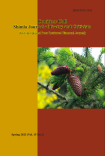Transcending The Color Line: A Study of the Poetry of Langston Hughes and Maya Angelou
African-American literature is the body of literature produced in the United States by writers of African descent. In order to understand any aspect of Afro-American life, one must realize that the black American is not without a cultural past, though he was many generations removed from it before his achievements in American literature. The forefathers of the African who eventually became slaves in the United States once lived in a society where university life was fairly common and scholars were beheld with reverence. Ahmed Baba was one of the greatest African scholars of the late sixteenth century. He was the author of more than 40 books and had the richest libraries of his day, with a collection of 1600 books. During his expatriation from Timbuktu, he lost them all.
After the initial poetical debut of Lucy Terry’s Bars Fight (1746), (which was known as the oldest piece of African-American Literature), Jupiter Hammon (1711-1806), and poet Phillis Wheatley (1753-84) stood for the main literary expression. Jupiter Hammon was the first published poet with an Ode to Phillis Wheatley. Frederick Douglass’s (1818-95) autobiography My Bondage and my freedom (1855) and Gustavus Vassa’s autobiography The Interesting Narrative of the life of Gustavus Vassa were rich with tales of religious redemption, the abolitionist struggle and the tales of progress. Prince Hall and John B. Russworm most outstandingly fought for liberty and justice. Prince Hall who on arriving in Boston, found that emancipation has brought neither freedom nor relief from the stigma of color. Du Bois’s famous essay book quotes: “The problem of the twentieth century is the problem of the color-line.”
Poonam Mor

